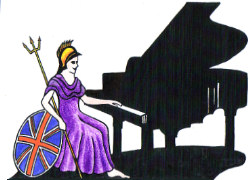Teachers, Accompanists and Piano Entertainers in the UK

UK Piano Page

The Temple, Eastgate
Sleaford, Lincolnshire NG34 7DR
England
White & Sentance are one of the longest
11, St. Mary's Hill
Stamford, Lincolnshire PE9 2DP
England
Music shop established in 1963 we stock a large
5a Garnett Close
Watford Herts
Watford, Hertfordshire WD24 5GN
England
Piano Emporium Watford serving the local piano
4A Empress Park
Empress Road, Southampton
Southampton, Hampshire SO14 0JX
England
Established in 2004, we supply and repair the
152 Market Street
Dalton-in-Furness, Cumbria LA15 8RQ
England
Music Festival for performers and guests Our 10th
18-06-2022 01:30PM
The Morecambe Bay Piano Group was set up to extend
11-12-2021 02:00PM
The Morecambe Bay Piano Group was set up to extend
08-01-2022 02:00PM
The Morecambe Bay Piano Group was set up to extend
12-02-2022 02:00PM